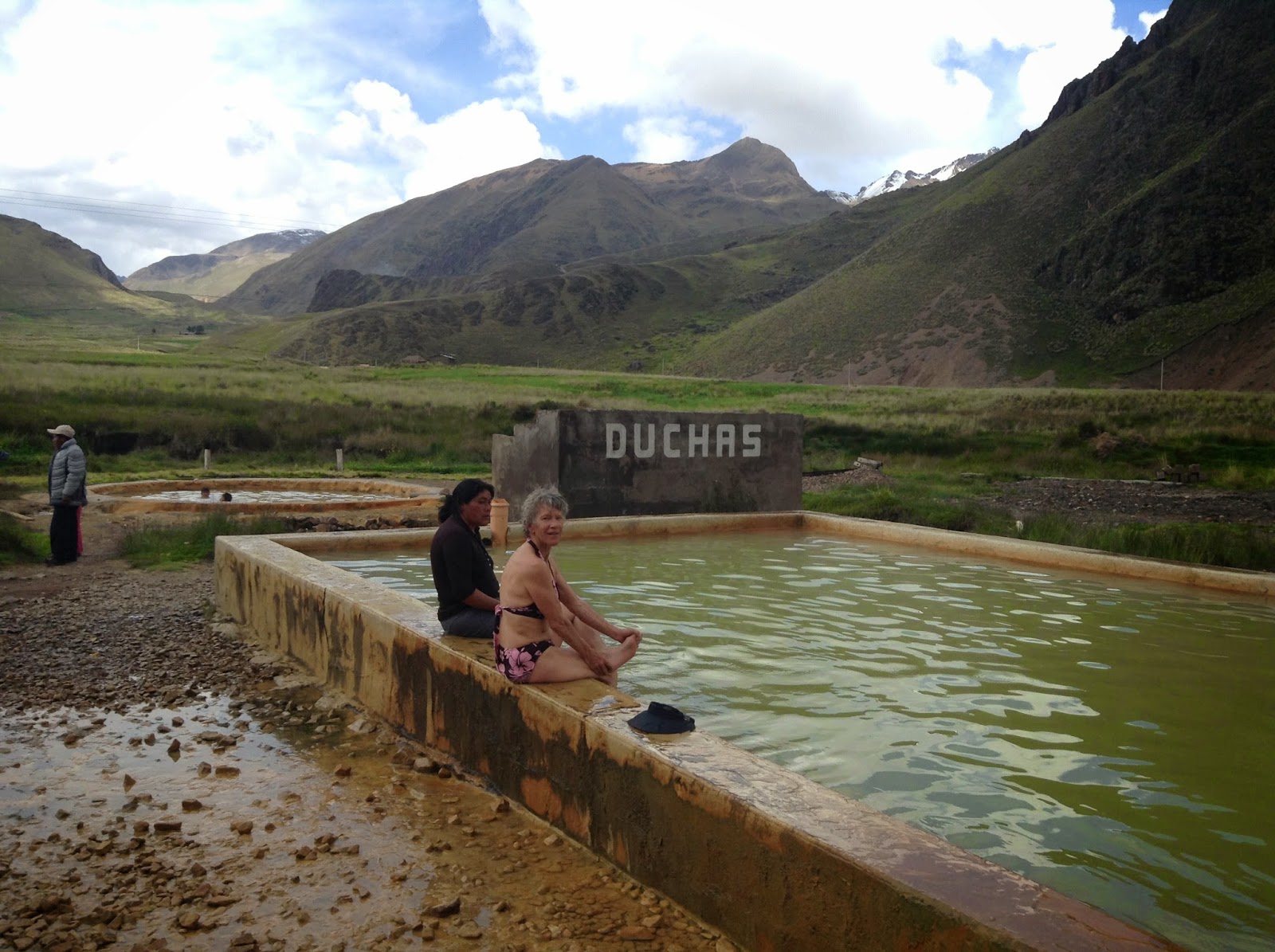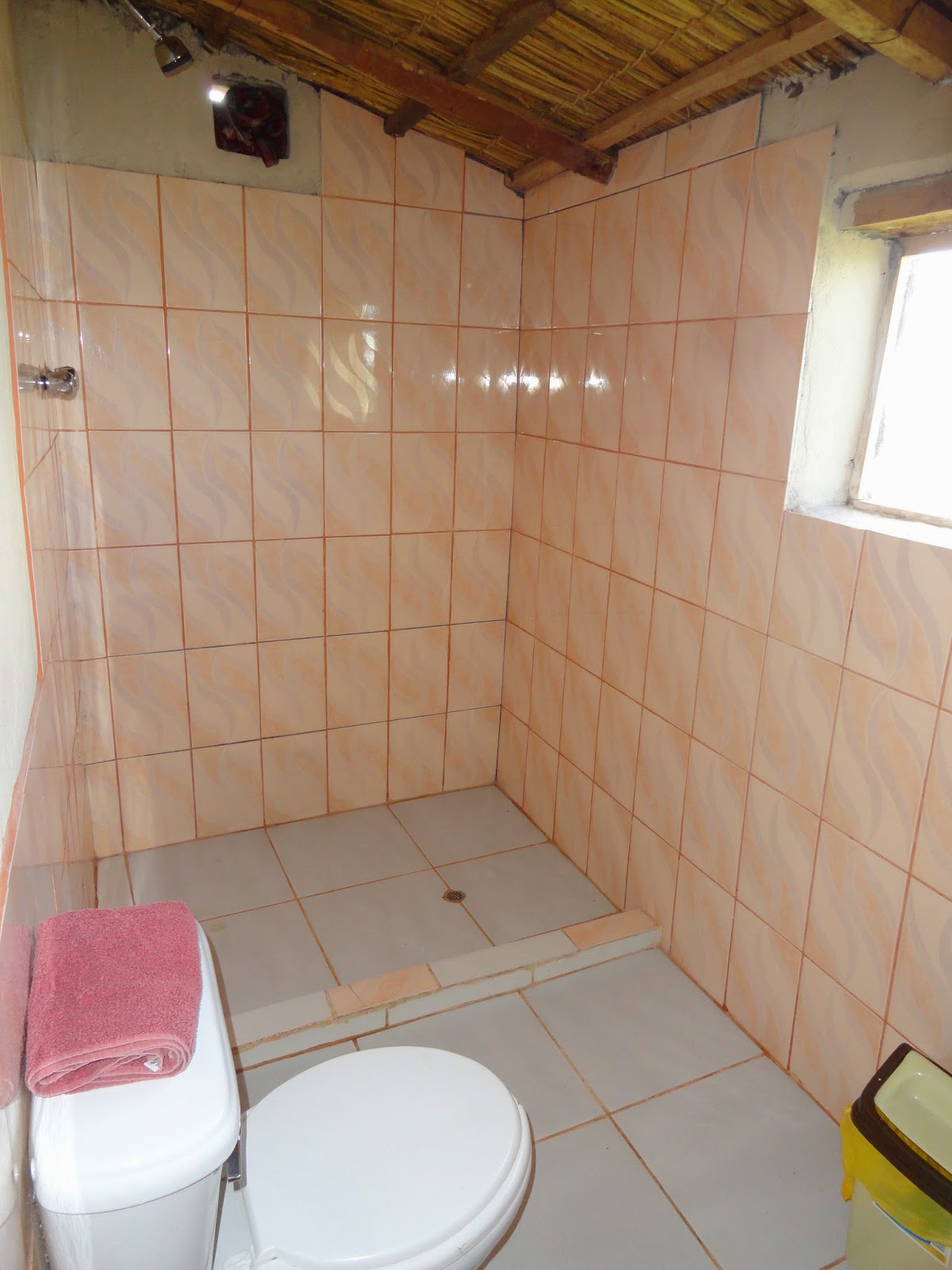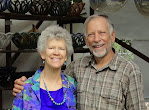Llachon (with an accent on that "o"), is the last town on the end of the Capachica Peninsula.
We were honored by being included in the annual Blessing of the First Seeds Ritual. We are staying at the home of Asunta and Armando. Asunta is the big sister of our oldest goddaughter, Noemi, and is married to Armando who grew up her in Llachon. We borrowed traditional clothing. This is my outfit all set out on the bed:
montera or shade hat, jacket,
chuco or head covering, and skirt.
The day starts with a procession from the plaza up to the furthest high point on the Capachica Peninsula, known as Apu Karu, or by an older title, Auki Karu. Leading the procession are three men carrying incense censers. They are followed by the village officers or
authoridades and their wives, three shaman or
pacos, the band, and then the rest of us. Sam and I filed in among the
authoridades, giving them coca as Armando instructed us. I had given Armando our camera and we had permission to take pictures, so most of these photos are his work.
 |
| incense censer |
The procession stopped several times to rest, giving us time to become more aquainted with others, to share coca and take up some of the weight that needed carried to the top of the mountain.
 |
| giving coca to the authoridades |
We were given white flags to carry in the procession. About 45 people walked in the procession, but by the middle of the ritual over 200 people were present.
 |
| Sam looks dapper in his Indiana Jones hat, yes? |
Our first ritual stop was at the cross at the top of the hill, blessing/smudging with the incense. Sam and I were both invited to swing the censer in front of the cross.
Then up the the sacred stone circle, a walled room where the ritual will take place:
First speeches and we pass before the
authoridades and their wives, greeting--and being greeted in return--with hats in hand, "
Que sea buen misa," or "May it be a good mass."
 |
| note Sam on the left |
The stones that block the doorway to the sacred circle were removed and first in were the incense censers. Each of the
authoridades swung the censer around the center stone table in blessing/smudging and the censer was handed to Sam. He also blessed the stone. I held back, thinking that we might be overstepping our welcome, but I was called forth to perform the rite. We were the only ones besides the central
authoridades and their wives who performed this rite. I felt very honored.
Shortly afterward, coca was passed around and everyone got in line to bring our prayerful chosen coca leaves (known as a
kint'u) to give to the
pacos which they added to a
despacho, a paper-lined collection of flowers and wine and incense. The
pacos were focused and attentive to each person, to each collection of prayer-laden leaves. People have come from all over the region to present their prayers for health and good crops.
They also bring the new potatoes, samples of their first crops of oca, quinoa, fava beans, corn. These First Seeds are placed on the round stone table/altar in the center of the circle.
 |
| First seeds being blessed |
Candles are lit and offered.
 |
| holding our candles |
We take a little break in the middle of the day, as the long line of people are still in line ofering their
kint'us. Asunta has brought lunch, knowing that the community food would be delayed. Armando takes our picture with Taquile in the background.
 |
| All dressed up! |
Then the dancing starts! Three times around the outside of the stone walled circle, then three or more time around the center round table with the seeds. We spill wine on the seeds and pour it down each other's throats. Four dancers are supposed to represent four kinds of potatoes, but I don't know which ones--then suddenly they tell me that
I am the White Potato (with my pale skin and white hair). It is great fun. I pause for Armando to take my picture:
 |
| The White Potato dances around the seeds |
Those who brought their first fruits mix what was brought and take it away. Ceremonial objects in a cache under the altar are attended to and the cache is sealed. The
pacos light three fires for each of the three
despachos, which they burn, tending the fires until they are pure ash.
 |
| The sacred space under the table is sealed |
We leave the sacred circle and gather for a community lunch. Steamed food is placed on clean cloths on the ground, as is the common way to make a picnic here. Sam and I are invited to sit with the
authoridades. Again, I am amazed at the honors given to us.
 |
| lunch |
Finally the doorways are sealed with rocks, The attendees have already begun to find their own way down the hill. We wait and complete the ceremony by joining the procession down, as we did this morning for the procession up. Armando gives me back the camera and climbs up to remove the Peruvan Flag and the White Flag that he placed next to the cross this morning. Sam carries the Peruvian flag down.
 |
| Armando climbs up to take down the flags |
The next week is to be dedicated to blessing individual fields.
We visit all of Armando and Asunta's fields over the next two days, decorating with flower petals and colorful paper strands and sprinkling wine.
 |
| Sam, Asunta, Jhoel, Tara, Kusi, Sarita |
 |
| Flowers in the air |
 |
| Tara sprinkles wine on the potato field. |
 |
| A thatch-roofed shelter near our high altitude field |
 |
| Ancient Chulpa above Llachon |





















































